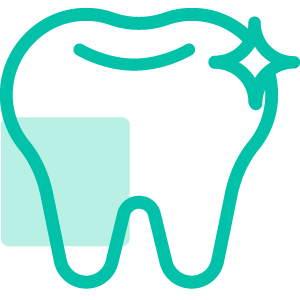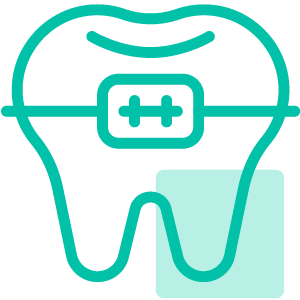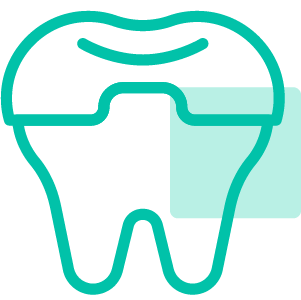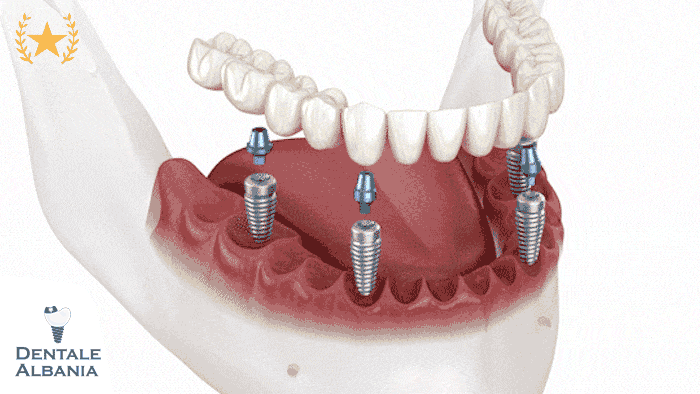Table of Contents
ToggleDental Anxiety, Fear, and Phobia: Overcoming Fear of the Dentist

Dental anxiety is more common than many people realize, affecting both adults and children alike. Terms such as nervous teeth, dentist fear, dental phobia, dentist anxiety, and extreme dental phobia describe different levels of stress people experience before or during dental appointments. If you’re scared of the dentist, you’re certainly not alone—around 44% of adults admit to some form of dentist fear or dental anxiety, and many actively avoid dental visits as a result.
Dental anxiety and phobias are serious conditions that can significantly impact your oral and overall health. Common signs include extreme nervousness, panic attacks, feeling frightened of the dentist, or experiencing an intense, uncontrollable fear dentistry creates. This fear often causes people to postpone critical dental care, leading to worsened dental issues, unnecessary pain, and ultimately, more invasive treatments.
Nervous Teeth: Understanding the Symptoms and Triggers
People who experience dentist anxiety may have physical symptoms like sweaty palms, rapid heartbeat, or even nausea at the mere thought of dental treatment. Terms like dentist fear, scared of dentist, dental fear, or dentist anxiety often describe an emotional response triggered by previous unpleasant experiences or fear of pain. It’s important to recognize these triggers to effectively manage your dental anxiety.
Why Are People Scared of the Dentist?
Fear of dentist visits often comes from negative past experiences, sensitivity to pain, embarrassment about dental health, or feelings of vulnerability and loss of control. Many patients also fear dental procedures due to the perceived invasive nature of treatments. This can escalate to extreme dental phobia, where patients experience significant distress even when thinking about visiting the dentist. Understanding that you’re not alone in experiencing these feelings can be a crucial first step in overcoming anxiety.
Dental Anxiety and Phobia: Impact on Oral Health
When dental anxiety leads to avoidance, oral health can deteriorate, potentially causing severe tooth decay, gum disease, and even tooth loss. The longer you delay care due to extreme dental phobia, the more complicated and costly treatments can become. This cycle only reinforces the fear, creating even greater anxiety. Breaking this pattern through dental sedation can significantly improve both your oral health and emotional wellbeing.
Fortunately, modern dentistry offers effective solutions like sedation dentistry, which can greatly reduce anxiety and help you feel calm during your visit, enabling you to receive essential care without fear or discomfort.
How Does Dental Anxiety Affect Patients?
Dental anxiety affects patients in various profound and sometimes unexpected ways, influencing their oral health, emotional well-being, and overall quality of life. It extends beyond merely feeling nervous about visiting the dentist—it can lead to significant avoidance behaviors that have lasting implications on both dental and general health. Terms such as dental fear, extreme dental phobia, dentist anxiety, or simply being scared of the dentist describe varying degrees of worry that people experience when faced with dental care. Understanding how dental anxiety impacts individuals helps highlight the importance of addressing these fears early.
Patients who experience dental anxiety often avoid regular dental check-ups, and in extreme cases, they may refuse to seek any dental treatment at all. Over time, neglecting dental care due to fear of the dentist can lead to serious oral health complications, including tooth decay, advanced gum disease, infections, and even tooth loss. This, in turn, can create a vicious cycle of declining oral health and increased anxiety—the longer the patient avoids care, the more extensive and potentially uncomfortable dental treatments become necessary.
Emotionally, dental anxiety can be debilitating. Individuals who are scared of dentist appointments might experience significant distress, panic attacks, insomnia, and even physical symptoms such as headaches, nausea, or elevated heart rate before or during dental visits. Such reactions often stem from previous negative experiences, fear of pain or needles, loss of control, or embarrassment about poor dental hygiene. Patients with extreme dental phobia frequently report feelings of shame about their oral health condition, further reinforcing avoidance behaviors and worsening the overall situation.
Moreover, dentist anxiety can affect a patient’s self-esteem and social interactions. Embarrassment over poor oral hygiene, bad breath, or visibly damaged teeth can limit social engagement, confidence, and even career opportunities. People struggling with dental fears and phobias might find themselves isolated or withdrawn, further compounding emotional distress.
Dental anxiety also creates a challenge for dentists themselves. Managing fearful patients often requires additional time, resources, and specialized techniques, such as sedation dentistry, to facilitate treatment. Dentists who specialize in treating anxious patients may need to employ additional psychological training to build trust and ensure patient comfort throughout procedures.
Acknowledging the reality of dental anxiety and its broad-reaching effects is vital. Dental professionals can offer solutions, including sedation dentistry, to ensure that patients can comfortably manage anxiety, access essential dental care, and reclaim their oral health and overall well-being.
What Are the Different Types of Dental Sedation?
Dental sedation encompasses several techniques designed to reduce anxiety, alleviate pain, and help patients remain calm during dental procedures. Various sedation options exist to suit individual needs, ranging from mild relaxation to deep sedation. Knowing the types of sedation available helps patients make informed decisions about the best method to overcome their dental anxiety.
What sedation is used in dentistry? Types explained
In dentistry, sedation can range from mild relaxation to deep sedation or general anesthesia. The choice largely depends on patient anxiety levels, medical history, the type of dental procedure, and the patient’s personal preferences. The main types of sedation dentistry include:
- Minimal Sedation: Also known as inhalation sedation, minimal sedation usually involves inhaling nitrous oxide mixed with oxygen, commonly called laughing gas. Patients remain awake and responsive but feel more relaxed.
- Moderate Sedation: Also known as conscious sedation, this sedation level can be achieved through oral medications or IV methods. Patients are conscious but often experience slurred speech and memory gaps.
- Deep Sedation: Patients remain on the edge of consciousness, drifting between awake and asleep, but can be awakened if needed.
- General Anesthesia: Under general anesthesia, the patient is fully unconscious during the procedure and will have no awareness or memory of the experience.
What Is IV Sedation Dentistry?
Intravenous sedation, commonly known as IV sedation, is a form of moderate sedation delivered directly through the vein. The drug works quickly, allowing the dentist to adjust the sedation level throughout the procedure. IV sedation is particularly suitable for those experiencing extreme dental anxiety or undergoing lengthy or complex treatments.
Benefits of IV sedation dentistry include rapid onset, effective anxiety reduction, and adjustable dosage levels throughout treatment. Patients typically recall little or nothing of the procedure afterward.
With the use of oral sedation or inhalation sedation
- Oral Sedation: Typically administered in pill form (such as diazepam), oral sedation provides mild to moderate sedation effects. It induces a calm, relaxed state, usually beginning around 30-60 minutes after ingestion. Patients remain awake but often feel sleepy or groggy, with some drifting into light sleep. Oral sedation is ideal for people who dislike needles and is suitable for many routine dental procedures.
- Inhalation Sedation (Laughing Gas): Also known as nitrous oxide sedation, this method provides mild relaxation by inhaling a mixture of oxygen and nitrous oxide through a small nose mask. Laughing gas helps patients feel calm and can effectively reduce mild to moderate anxiety. It is quickly reversible, allowing patients to drive home shortly afterward, unlike oral or IV sedation methods.
Choosing the right type of sedation dentistry is crucial to ensuring comfort and safety. Your dentist will carefully evaluate your medical history, anxiety level, and specific treatment needs before recommending the most suitable sedation approach for your procedure.
What Drugs Are Used for Sedation in Dentistry?

Dental sedation relies on various medications to help patients relax, reduce anxiety, and manage discomfort during procedures. The type of sedation used depends on factors such as the patient’s anxiety level, medical history, and the complexity of the dental treatment. These drugs range from mild sedatives that induce relaxation to stronger medications that result in deep sedation or unconsciousness.
What Drug Is Used for Dental Sedation in the UK?
In the UK, dentists use a range of sedative drugs based on the level of sedation required. The most common drugs for dental sedation include:
- Midazolam – The most frequently used IV sedation drug in UK dentistry, Midazolam belongs to the benzodiazepine family and is known for its calming, amnesic, and muscle-relaxing effects.
- Diazepam (Valium) – Often prescribed for oral sedation, Diazepam is a benzodiazepine that helps patients feel drowsy and less anxious before a procedure.
- Lorazepam – Another oral sedative, Lorazepam has a stronger and longer-lasting effect than Diazepam, making it suitable for more extensive dental procedures.
- Zaleplon and Triazolam (Halcion) – These drugs are commonly used for mild oral sedation, offering a shorter duration of action while still promoting relaxation.
- Nitrous Oxide – Also known as laughing gas, this inhaled sedative is commonly used for mild sedation, especially in children and patients with moderate anxiety.
What Drug Is Used for Dental Sedation in Albania?
In Albania, as in most European countries, the drugs used for dental sedation are generally the same as those commonly used throughout the EU and UK. The most commonly used drug for dental sedation in Albania is midazolam, especially for IV (intravenous) conscious sedation. Here’s a breakdown of what is typically used:
Common Sedatives Used in Albania for Dental Sedation:
-
Midazolam (IV Sedation)
-
A benzodiazepine known for its fast-acting, anti-anxiety, and amnesic effects.
-
Used for moderate to deep conscious sedation during longer or more invasive procedures.
-
-
Diazepam or Lorazepam (Oral Sedation)
-
Oral sedatives in the benzodiazepine family.
-
Used for mild to moderate sedation, especially in patients with dental anxiety or phobia.
-
Taken 30–60 minutes before the appointment.
-
-
Nitrous Oxide (Inhalation Sedation)
-
Also known as laughing gas.
-
Common in pediatric dentistry and minor procedures.
-
Allows for rapid recovery, and patients can usually drive themselves afterward.
-
In Public vs Private Clinics:
-
Private dental clinics in Albania are more likely to offer a full range of sedation options, including IV sedation with midazolam and even general anesthesia when required.
-
Public clinics may be more limited and often use local anesthesia, with sedation available only in specific cases or through referrals.
What IV Sedation Do Dentists Use?
Intravenous (IV) sedation is a preferred option for patients experiencing severe dental anxiety or undergoing lengthy dental treatments. The primary drug used for IV sedation in dentistry is Midazolam, which is fast-acting and provides both relaxation and amnesia. Other drugs that may be used in IV sedation include:
- Propofol – Though more common in hospital settings, some dental specialists use this drug for deep sedation.
- Fentanyl or Remifentanil – Occasionally used in combination with Midazolam for pain management.
- Ketamine – Less commonly used, but it provides deep sedation and pain relief for highly invasive procedures.
What Do NHS Dentists Use for Sedation?
NHS dentists typically provide conscious sedation using Midazolam IV sedation or nitrous oxide. Some NHS dental clinics offer oral sedation for patients with mild anxiety, though IV sedation is preferred for moderate to severe cases. General anesthesia, which requires the patient to be completely unconscious, is typically only available in hospital settings for complex procedures.
Understanding the different drugs used in dental sedation can help patients feel more informed and confident in their treatment options. By discussing their concerns with a dentist, they can determine the most appropriate sedative for their needs, ensuring a stress-free and comfortable dental experience.
Is Dental Sedation Safe?
Dental sedation is generally considered safe when administered by a trained and qualified dental professional. Whether using minimal sedation like nitrous oxide or deeper sedation such as IV sedation, strict protocols and monitoring systems ensure patient safety. However, as with any medical procedure, sedation dentistry carries some risks, which vary depending on the type of sedation, the patient’s health, and the medications used.
What Is the Safest Dental Sedation?
The safest type of dental sedation depends on the patient’s individual needs and medical history. However, nitrous oxide (laughing gas) is often regarded as the safest option due to its mild effects, rapid onset, and quick recovery time. It is widely used in both adults and children and does not require a recovery period before resuming normal activities.
For patients with moderate to severe dental anxiety, oral sedation with benzodiazepines (such as diazepam or lorazepam) or IV sedation with midazolam are also safe options when administered by experienced professionals. These drugs have predictable effects and reversible properties, making them reliable choices for sedation dentistry.
What Are the Risks of Intravenous Sedation?
While IV sedation is highly effective for managing dental anxiety, there are some risks involved. Possible complications include:
- Drowsiness and delayed recovery – Some patients may take longer to recover from the sedative effects, requiring supervision for 24 hours.
- Breathing irregularities – Though rare, some patients may experience slowed breathing, which is why oxygen levels are closely monitored.
- Allergic reactions – While uncommon, some individuals may have sensitivities to sedative drugs.
- Low blood pressure or dizziness – Some patients experience drops in blood pressure, which can lead to lightheadedness or fainting.
These risks are minimized by thorough pre-sedation assessments, careful dosage control, and continuous patient monitoring throughout the procedure.
What Are the Disadvantages of Oral Sedation?
Oral sedation, while effective, has some drawbacks:
- Unpredictable absorption – Since the drug is taken orally, it may take longer to work, and its effectiveness can vary based on metabolism.
- Longer recovery time – Unlike nitrous oxide, which wears off quickly, oral sedatives can take hours to leave the system.
- Drowsiness and memory effects – Patients may feel groggy after their procedure and have trouble remembering details of their visit.
Why Avoid Sedation?
While sedation dentistry is safe for most people, it may not be suitable for:
- Patients with certain medical conditions, such as severe respiratory issues, liver disease, or neurological disorders.
- Pregnant women, as some sedatives can pose risks to fetal development.
- People with a history of substance abuse, as certain sedatives can be habit-forming.
- Those allergic to sedation medications, which could lead to adverse reactions.
Before opting for sedation dentistry, it’s essential to discuss medical history and concerns with a dentist to ensure the safest and most suitable sedation method is chosen.
By following strict safety guidelines and assessing each patient’s needs individually, dental professionals ensure that sedation dentistry remains a safe, effective way to manage dental anxiety and discomfort.
How Long Does Dental Sedation Last?
The duration of dental sedation varies depending on the type of sedation used, the patient’s metabolism, and the complexity of the dental procedure. Some forms of sedation wear off quickly, allowing patients to resume normal activities shortly after treatment, while others have lingering effects that require a full day of recovery. Understanding how long dental sedation lasts can help patients plan accordingly and ensure a smooth recovery process.
How Long Does a Tooth Extraction Take With Sedation?
For most patients, a tooth extraction with sedation takes between 30 minutes to an hour, depending on the complexity of the extraction. However, the sedation’s duration may extend beyond the procedure itself. For example:
- Nitrous oxide (laughing gas) wears off within 15–30 minutes after the procedure.
- Oral sedation effects can last 2 to 6 hours, meaning patients may feel drowsy for the remainder of the day.
- IV sedation can last between 4 and 8 hours, and full recovery may take up to 24 hours.
After a sedated tooth extraction, it is recommended that patients arrange for someone to drive them home and rest for the remainder of the day.
How Long Does Dental Sedation Take to Kick In?
The time it takes for sedation to take effect depends on the type of sedation used:
- Nitrous oxide begins working within 3 to 5 minutes after inhalation.
- Oral sedation (such as diazepam or lorazepam) usually takes 30 to 60 minutes to start working, which is why patients are instructed to take it before their appointment.
- IV sedation works almost immediately as the sedative is delivered directly into the bloodstream.
Patients receiving oral or IV sedation should arrive early for their appointment to allow time for the sedation to take full effect before the procedure begins.
How Long Does Dental Sedation Stay in Your System?
The amount of time sedation stays in a patient’s system depends on the type of sedative and individual metabolism. General timeframes include:
- Nitrous oxide is completely eliminated within 30 minutes to an hour after stopping inhalation.
- Oral sedation drugs (such as diazepam) can remain in the system for 6 to 12 hours, depending on the dosage.
- IV sedation drugs like midazolam can have effects lasting 4 to 8 hours, with drowsiness persisting up to 24 hours in some cases.
Do You Fall Asleep With Oral Sedation?
Oral sedation does not necessarily make patients fall asleep, but it does induce a state of deep relaxation. Patients may feel drowsy and sometimes drift off, but they remain conscious and responsive. Because oral sedation affects memory, many patients may not recall much of their procedure, which is beneficial for those with severe dental anxiety.
Understanding the duration of different types of sedation helps patients prepare for their procedures and recovery. If sedation is needed for an extensive dental treatment, discussing timing and aftercare with a dentist ensures a smooth and safe experience.
Do You Feel Pain With Dental Sedation?

One of the biggest concerns patients have about dental procedures is pain management. Dental sedation plays a crucial role in alleviating anxiety and discomfort, but many patients wonder whether they will still feel pain during treatment. The answer depends on the type of sedation used, the patient’s pain threshold, and whether local anesthesia is administered alongside sedation.
Do You Feel Pain With Oral Sedation?
Oral sedation, often given in the form of a pill like diazepam, lorazepam, or triazolam, primarily helps patients feel relaxed and less anxious, but it does not eliminate pain by itself. However, oral sedation is almost always combined with local anesthesia, which ensures that patients do not feel pain during the procedure.
- Oral sedation puts patients in a deeply relaxed state, meaning they may not be fully aware of what is happening.
- Patients might still feel pressure or slight sensations, but they typically do not experience pain due to the use of a numbing agent.
- Some patients may fall into a light sleep but can still respond to the dentist if necessary.
- Due to its amnesic effects, many patients do not remember their procedure once the sedation wears off.
Does the Tooth Still Need to Be Numbed With Sedation?
Yes, even with sedation, dentists almost always administer local anesthesia to numb the area being treated. Sedation helps patients relax and reduces anxiety, but the local anesthetic ensures that no pain is felt during the procedure.
- Nitrous oxide (laughing gas) helps with anxiety but does not block pain, so a local anesthetic is still needed.
- Oral sedation reduces fear but does not numb pain, so numbing injections are used.
- IV sedation makes patients deeply relaxed, but numbing is still necessary for procedures like extractions or fillings.
- General anesthesia, which is only used in hospital settings, is the only type that fully eliminates pain without needing local anesthesia.
Can You Still Feel Pain With Laughing Gas?
Nitrous oxide (laughing gas) is effective in reducing anxiety and discomfort, but it does not completely block pain on its own.
- Laughing gas makes patients less sensitive to discomfort, but a local anesthetic is still required for most dental procedures.
- It helps with mild discomfort and the fear of needles, making the local anesthesia injection feel less intimidating.
- The effects of nitrous oxide wear off quickly, allowing patients to resume daily activities shortly after their appointment.
The Role of Sedation in Pain-Free Dentistry
Sedation dentistry is not a replacement for local anesthesia but a complement to it, ensuring that patients remain calm, comfortable, and pain-free during their treatment. Discussing pain management options with a dentist can help patients choose the best sedation and anesthesia combination for their needs, making dental visits stress-free and painless.
What Dental Procedures Can Be Done With Sedation?
Sedation dentistry is beneficial for a wide range of dental procedures, from routine cleanings for patients with extreme dental phobia to more complex treatments like tooth extractions and dental implants. The level of sedation required varies depending on the type of procedure, the patient’s anxiety level, and their pain tolerance.
Can You Ask to Be Put to Sleep for Tooth Extraction?
Yes, patients can request sedation for tooth extraction, especially if they experience dental anxiety or if the procedure is complex (e.g., wisdom teeth removal). The sedation options include:
- Nitrous oxide (laughing gas): Helps with relaxation but does not induce sleep.
- Oral sedation: Makes the patient drowsy and relaxed but still aware.
- IV sedation: Allows deeper relaxation, with little to no memory of the procedure.
- General anesthesia: Used for more extensive extractions, such as impacted wisdom teeth, rendering the patient fully unconscious.
While many extractions can be performed with just local anesthesia, sedation helps patients who have fear of the dentist, an overactive gag reflex, or trouble sitting still for extended periods.
Can I Ask My Dentist for Sedation in the UK?
Yes, patients in the UK can request dental sedation for many procedures. While IV sedation and oral sedation are commonly available at private dental clinics, NHS sedation services are primarily offered for patients with severe dental anxiety, special needs, or complex dental surgeries. If you are considering sedation for your procedure, it is best to discuss your options and costs with your dentist.
Can I Ask My Dentist for Sedation in Albania?
Yes, you can ask your dentist for sedation in Albania, especially if you experience dental anxiety, fear of the dentist, or are undergoing a complex or lengthy procedure such as tooth extractions, implants, or oral surgery.
What to Know When Requesting Sedation in Albania:
-
Private Clinics:
Most private dental clinics in Albania offer sedation options, including:-
Oral sedation (with medications like diazepam or lorazepam).
-
IV sedation (usually midazolam).
-
Nitrous oxide (less common, but available in some clinics).
-
General anesthesia (used for surgical cases, usually in hospital settings or specialized clinics).
-
-
Public Clinics:
Sedation options may be more limited in public dental clinics (those operating under the Albanian health system). Typically, these clinics focus on local anesthesia and basic treatments. You might need a referral to a specialist or private provider for sedation. -
Medical Screening:
Your dentist will ask about your medical history, current medications, and anxiety level to determine if you are a suitable candidate for sedation. This step is important for safety and proper dosage. -
Costs:
Sedation, especially IV or general anesthesia, is generally not covered by public health services (except in hospital cases or special needs situations) and must be paid for privately. -
Advanced Dental Tourism Clinics:
Albania is a growing destination for dental tourism, and many international patients specifically request sedation services for pain-free treatment. These clinics are well-equipped for sedation and cater to foreign standards.
Bottom Line:
You can absolutely request sedation in Albania—just make sure to communicate your needs in advance with the clinic. They will guide you through the options, suitability, and costs involved.
Does Oral Sedation Put You to Sleep?
Oral sedation does not put patients fully to sleep, but it does make them drowsy and deeply relaxed. Some patients may drift in and out of sleep but can still respond if spoken to. IV sedation, however, can induce a semi-conscious state, where the patient has little to no memory of the procedure.
Dental Procedures That Commonly Use Sedation
Many dental treatments can be performed under sedation, including:
- Routine cleanings and fillings (for patients with extreme dental phobia)
- Tooth extractions, including wisdom teeth removal
- Root canal treatment
- Dental implants and surgical procedures
- Crowns and veneers
- Gum disease treatments (scaling and root planing)
- Bone grafting and other pre-implant procedures
Choosing the Right Sedation for Your Procedure
Sedation dentistry provides a comfortable, pain-free experience, ensuring that patients can receive necessary treatments without fear or anxiety. By discussing your options with your dentist, you can find the right level of sedation to match your comfort level and treatment needs.
How to Prepare for IV Sedation?
Proper preparation for IV sedation is crucial to ensure a safe, smooth, and effective dental procedure. Unlike oral or nitrous oxide sedation, intravenous (IV) sedation involves the administration of sedative drugs directly into the bloodstream, meaning patients must follow specific guidelines before and after treatment. This section outlines everything you need to know about preparing for IV sedation dentistry.
Why Do You Need Someone With You for 24 Hours After Sedation?
Patients undergoing IV sedation are required to have a responsible adult accompany them to and from their appointment. This is because:
- IV sedation can cause drowsiness, confusion, and impaired coordination for several hours.
- Reaction times may be slower, making driving unsafe.
- Patients may not fully remember post-procedure instructions, so having someone present helps with aftercare.
- Some individuals may experience mild dizziness, nausea, or disorientation, making assistance necessary.
Dentists typically require patients to refrain from driving, operating heavy machinery, or making important decisions for 24 hours following IV sedation.
Checklist for Patients Having IV Sedation
To ensure a safe and smooth experience, follow this checklist before your IV sedation appointment:
✅ Fasting Instructions: Do not eat for 6 to 8 hours before your procedure. Small sips of water may be allowed up to 2 hours prior unless otherwise advised.
✅ Avoid Alcohol & Caffeine: Refrain from drinking alcohol 24 hours before sedation, as it can interfere with sedative effects.
✅ Take Regular Medications (Unless Advised Otherwise): If you take prescription medications, consult your dentist to determine which should be taken or skipped before the procedure.
✅ Wear Comfortable Clothing: Loose-fitting clothes make it easier for the dentist to access your arm for the IV line. Avoid tight sleeves and wear flat shoes to prevent falls.
✅ Remove Nail Polish & Makeup: This ensures proper monitoring of oxygen levels during sedation.
✅ Arrange Transportation & Support: Have a responsible adult drive you home and stay with you for at least 24 hours.
✅ Inform Your Dentist of Health Conditions: Let your dentist know if you have asthma, diabetes, high blood pressure, or any allergies to medications.
How Will I Feel After Intravenous Sedation?
After IV sedation, patients typically experience:
- Drowsiness and grogginess for a few hours.
- Memory gaps or complete amnesia of the procedure.
- Slight dizziness or loss of coordination, requiring rest.
- A dry mouth or mild nausea (usually temporary).
Most patients recover within 24 hours, but it is advised to rest, avoid strenuous activity, and follow all post-sedation care instructions provided by the dentist.
By following these preparation guidelines, patients can maximize safety, minimize risks, and ensure a smooth recovery from IV sedation, allowing for a stress-free dental experience.
How Much Does Dental Sedation Cost in the UK?

The cost of dental sedation in the UK varies depending on several factors, including the type of sedation used, the complexity of the procedure, and whether the treatment is carried out through the NHS or a private clinic. Understanding these costs can help patients plan for their dental care and make informed decisions about their treatment options.
What Affects the Cost of Dental Sedation in the UK?
The price of dental sedation can be influenced by several factors, including:
- Type of Sedation Used: The cost differs between nitrous oxide, oral sedation, IV sedation, and general anesthesia.
- Private vs. NHS Treatment: NHS sedation is usually more affordable but may only be available for certain patients, while private dental sedation tends to be more expensive but widely accessible.
- Complexity of the Procedure: More extensive treatments, such as dental implants, extractions, and root canals, may increase the overall cost of sedation.
- Clinic Location: Prices may vary depending on whether the dental practice is in London, major cities, or smaller towns.
- Specialist vs. General Dentist: Sedation provided by a specialist, such as an oral surgeon or anesthetist, may come at a higher cost than that provided by a general dentist.
How Much Does Private Dental Sedation Cost in the UK?
For those seeking private dental sedation, here is a general pricing breakdown:
- Nitrous oxide sedation (laughing gas): £50 – £100 per session
- Oral sedation (benzodiazepine medication): £100 – £250 per session
- IV sedation (midazolam-based): £200 – £600 per session
- General anesthesia (hospital-based treatment): £1,000 – £3,000+ per session
Prices will vary depending on the clinic and procedure, and some dentists offer sedation packages that cover both the sedation and the dental treatment.
Can You Get Sedation on the NHS?
Yes, NHS dental sedation is available, but it is typically reserved for patients with severe dental anxiety, disabilities, or complex procedures. NHS sedation is not guaranteed for everyone and usually requires a referral.
- Nitrous oxide sedation: Available in some NHS dental clinics.
- IV sedation: Offered for patients who meet the eligibility criteria.
- General anesthesia: Only provided in hospitals for major dental surgery.
For NHS patients, sedation costs are usually included in the NHS Band 2 (£70.70) or Band 3 (£306.80) treatment plans, depending on the procedure.
Is Sedation Dentistry Worth the Cost?
For many patients with dental anxiety, phobia, or complex treatment needs, sedation is a worthwhile investment. It allows for:
- A pain-free, stress-free experience.
- The ability to complete multiple treatments in one session.
- Improved oral health by preventing delays in necessary care.
While private sedation can be costly, many dental clinics offer financing options or payment plans to make treatment more accessible.
Understanding the cost of dental sedation in the UK can help patients choose the best option for their needs and budget, ensuring they receive comfortable and effective dental care.
How Much Does Dental Sedation Cost in Albania?
Dental sedation in Albania is becoming increasingly common, especially among international patients and locals who suffer from dental anxiety or require complex procedures. One of the most attractive aspects of receiving sedation dentistry in Albania is the affordability. Compared to countries like the UK, Italy, or Germany, the cost of dental sedation in Albania is significantly lower, even in high-quality private clinics that cater to European standards.
Average Costs of Dental Sedation in Albania
The exact price of dental sedation in Albania depends on several factors, including the type of sedation, the length and complexity of the procedure, and whether the treatment is performed in a private clinic or hospital setting. Below is an estimated breakdown:
-
Nitrous Oxide (Laughing Gas):
€30 to €70 per session-
Common for mild dental anxiety and short treatments
-
Quick recovery—patients can usually leave the clinic shortly after
-
-
Oral Sedation (e.g., Diazepam, Lorazepam):
€50 to €120 per session-
Taken in pill form before the procedure
-
Often used for patients with moderate anxiety
-
-
IV Sedation (Midazolam):
€150 to €300 per session-
Requires trained staff and monitoring equipment
-
Recommended for severe dental phobia or longer surgeries
-
-
General Anesthesia (Hospital Setting):
€400 to €800 or more-
Used in rare, complex surgical cases
-
Typically performed in a hospital with an anesthesiologist present
-
These prices are approximate and can vary depending on the clinic, location (e.g., Tirana vs smaller towns), and whether sedation is bundled with the dental treatment cost.
What’s Included in the Cost?
The sedation fee usually includes:
-
Pre-sedation assessment and health screening
-
The sedative medication (oral, IV, or inhaled)
-
Monitoring during the procedure
-
Post-sedation recovery observation
In some clinics, sedation is offered as part of a full treatment package, especially for procedures like All-on-4 implants, full-mouth rehabilitation, or multiple extractions.
Is Sedation Dentistry in Albania Worth It?
For patients with dental phobia, low pain tolerance, or complex dental needs, sedation can be a game-changer—and at Albanian prices, it becomes far more accessible. Many patients from the UK, Italy, and Germany travel to Albania for affordable, high-quality dental care with sedation included, often saving up to 70% compared to home country prices.
Always ensure the clinic is certified and the staff administering sedation are properly trained. When done by professionals, dental sedation in Albania is both cost-effective and safe, making it an excellent option for stress-free dental care.
How Safe Is Sedation Dentistry?
Sedation dentistry is generally very safe when administered by a trained and experienced dental professional. It is used to help patients manage dental anxiety, phobias, and discomfort during dental procedures. However, as with any medical intervention, there are potential risks and considerations to keep in mind. The safety of sedation depends on the type of sedation used, the patient’s health status, and proper monitoring during the procedure.
What Is the Safest Dental Sedation?
The safest type of dental sedation varies depending on the patient’s needs and medical history. The most commonly used and safest sedation methods include:
- Nitrous oxide (laughing gas) – Considered the safest for most patients, including children. It wears off quickly and has minimal side effects.
- Oral sedation (benzodiazepines such as diazepam or lorazepam) – Safe when administered in the correct dosage by a qualified dentist.
- IV sedation (midazolam-based sedation) – Safe when monitored by a trained dental professional, but requires a longer recovery time.
- General anesthesia – Only used for extensive dental procedures in a hospital setting, where anesthetists manage and monitor the patient.
For most routine dental treatments, nitrous oxide and oral sedation provide the best balance of safety, effectiveness, and recovery time.
What Are the Risks of Sedation Dentistry?
Although sedation dentistry is generally safe, there are some risks involved, particularly for patients with certain medical conditions. The potential risks include:
- Drowsiness and delayed recovery – Patients may experience prolonged grogginess, especially after oral or IV sedation.
- Breathing difficulties – While rare, some sedatives may cause respiratory depression, which is why oxygen levels are carefully monitored.
- Low blood pressure and dizziness – Some patients may experience a drop in blood pressure, leading to lightheadedness.
- Nausea and vomiting – Certain sedatives can cause mild nausea, particularly if fasting guidelines were not followed.
- Allergic reactions – Although uncommon, some individuals may have sensitivities to certain sedative drugs.
Patients should always discuss their medical history, allergies, and medications with their dentist to reduce risks and ensure a safe experience.
Who Should Avoid Sedation Dentistry?
Sedation dentistry is safe for most patients, but it may not be suitable for individuals with:
- Severe respiratory conditions (e.g., chronic obstructive pulmonary disease or severe asthma).
- Heart problems or unstable blood pressure.
- Pregnant women (some sedatives can affect fetal development).
- A history of drug dependency or substance abuse.
- Allergies to sedative medications.
For these patients, a dentist may recommend alternative pain and anxiety management techniques to ensure a safe and comfortable dental experience.
Why Did My Dentist Give Me Diazepam?
Diazepam is commonly prescribed for oral sedation in patients with dental anxiety or phobia. It belongs to the benzodiazepine family, which helps:
- Reduce anxiety and muscle tension before and during dental procedures.
- Induce a state of relaxation and drowsiness, making the experience less stressful.
- Provide mild amnesic effects, so patients remember little about the procedure.
Patients should take diazepam only as prescribed, as misuse can lead to excessive sedation and prolonged recovery times.
Final Thoughts on Sedation Safety
When performed by trained professionals, sedation dentistry is a safe and effective way to manage dental fear, pain, and anxiety. By following pre-sedation guidelines, proper monitoring, and post-procedure care, patients can have a comfortable and worry-free dental experience. If you have concerns, discuss your medical history with your dentist to determine the safest sedation option for you.
What Are the 5 Levels of Sedation?

Sedation dentistry provides different levels of relaxation and consciousness, depending on the patient’s needs, the procedure being performed, and the type of sedation used. The five levels of sedation range from minimal relaxation to complete unconsciousness. Understanding these levels can help patients choose the right sedation for their dental treatment and comfort level.
1. Minimal Sedation (Anxiolysis)
Minimal sedation, also known as anxiolysis, is the lightest form of sedation used in dentistry. Patients remain fully conscious and responsive but feel calm and relaxed.
- Used for: Routine dental cleanings, mild dental anxiety.
- Common sedatives: Nitrous oxide (laughing gas) or low-dose oral sedation (e.g., diazepam).
- Effects: Patients feel relaxed but remain aware of their surroundings.
- Recovery time: Quick, often within 30 minutes for nitrous oxide.
2. Moderate Sedation (Conscious Sedation)
Moderate sedation, also referred to as conscious sedation, makes patients sleepy but still responsive. It is commonly used for patients with moderate dental anxiety or those undergoing longer procedures.
- Used for: Tooth extractions, root canals, minor oral surgeries.
- Common sedatives: Oral medications like triazolam or lorazepam, or IV sedation (midazolam).
- Effects: Patients feel drowsy, may slur speech, and may not remember the procedure.
- Recovery time: Several hours, requiring rest and an escort home.
3. Deep Sedation
Deep sedation places patients in a semi-conscious state, where they are barely aware of their surroundings and may not respond to commands. This is used for patients with extreme dental phobia or complex dental procedures.
- Used for: Dental implants, multiple extractions, complex surgeries.
- Common sedatives: Higher doses of IV sedation (propofol, midazolam).
- Effects: Patients are difficult to wake but can be aroused if needed.
- Recovery time: Up to 24 hours; patients must be monitored post-procedure.
4. General Anesthesia
General anesthesia completely renders the patient unconscious. It is used for extensive procedures or patients with severe dental anxiety who cannot tolerate other forms of sedation.
- Used for: Major oral surgeries, patients with special needs.
- Common sedatives: Propofol, ketamine, sevoflurane (administered in a hospital or specialized dental facility).
- Effects: Patients are unconscious and do not remember anything.
- Recovery time: Several hours to a full day; requires strict monitoring.
5. Dissociative Sedation
Dissociative sedation is a rare form of sedation where patients experience a detached state of consciousness, sometimes referred to as a trance-like condition. This type is less common in dentistry but may be used in special cases.
- Used for: Severe pain management in rare dental procedures.
- Common sedatives: Ketamine, sometimes combined with other sedatives.
- Effects: Patients may not recognize their surroundings but retain basic reflexes.
- Recovery time: Varies depending on dosage and patient metabolism.
Choosing the Right Level of Sedation
The choice of sedation depends on factors like procedure type, patient comfort level, and medical history. Dentists assess each patient to recommend the safest and most effective level of sedation.
By understanding the five levels of sedation, patients can make informed decisions and feel confident in their dental treatment experience.









